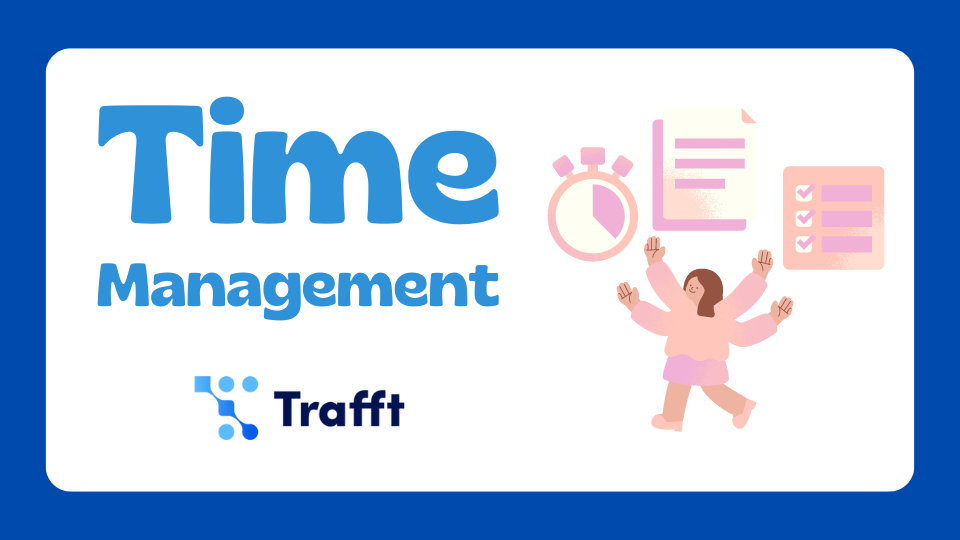You’re all set up, ready to provide exceptional services to your client. But as time passes by, you realize they are late. Nothing new there - all appointment-based businesses have one thing in common - late clients.
If one client being late didn’t disrupt your whole day, schedule, employees, and other clients it wouldn’t be a problem. But since that’s not the case, as an appointment-based business, you have to find effective ways to deal with customers who are always late, including creating a late policy for clients.
Why Dealing with Clients Who Are Late is Important?
Customers who are late make you work under pressure, make a mess out of your organized schedule, and can negatively affect the satisfaction of customers who’ve scheduled appointments after them. Many appointment-based businesses and owners make the same mistake - THEY try to make up for clients who are late. But the responsibility is on clients who’re late, not on you. So instead of rushing through appointments and being frustrated the whole day, you should eliminate the root cause of your problem - late clients.
It’s not always easy to do that, especially since clients, late or punctual, are what makes your business stay afloat. But when do you say “I’ve had enough”? Well, we’ve prepared failproof strategies for dealing with late arrivals, and even late payments from clients. From creating late policy for clients to providing you with the template, you can say you’ve tried everything once you implement these tips into your business.
P.S. If they keep being late for appointments, you know what you have to do!
Dealing with Late Arrivals

Image by storyset on Freepik
The client is late one time, no biggie. But they continue to show up late for the next appointment, then next, then next - you get the point. How do you bring up client’s late arrivals? How do you make yourself to have that not-so-pleasant conversation?
The first thing you need to do is calm down and prepare. Take into consideration what that particular client means for your business, and whether you’re okay with them not coming back. The next thing is to get your facts straight. How many times were they late? How long you had to wait for them to show up per appointment? When you get all the facts straight, you can take several approaches to deal with late clients.
Four Approaches to Dealing with Late Arrivals
Personal touch
When dealing with a client who is consistently tardy, taking a personalized approach can go a long way. Start by acknowledging the client's significance to your business. Share genuine sentiments about their loyalty and the positive impact they've had. This not only emphasizes the value you place on their business but also sets a tone of understanding.
Following this diplomatically set expectations regarding punctuality, politely explain the impact of their tardiness on your schedule, the inconvenience it causes to other clients, and the challenges it poses for your employees. By articulating the repercussions without sounding accusatory, you make it clear that punctuality is a shared responsibility.
Encourage the client to discuss any challenges they might be facing that contribute to their lateness. This approach fosters an open dialogue and allows you to work together toward a solution, ensuring the client feels heard and understood.
Shortened appointment
When faced with a consistently late client, consider adjusting the length of their appointments. This adaptation is a practical way to accommodate their schedule while still maintaining control over your time. Emphasize that it's a proactive measure taken to ensure that your services remain efficient and effective for all clients. Clarify that the adjustment is not there to publish them, but that it's more of a strategic move to maintain the quality of service.
Outline the specifics of the adjustment, such as a reduction in the duration of the service or a streamlined version of the appointment. Reinforce the idea that, by respecting the allocated time, the client can still receive a satisfactory experience while minimizing disruptions to the overall schedule and causing scheduling conflicts.
Full payment
For clients who consistently struggle with punctuality, implementing a full payment policy upfront can be a powerful deterrent. Start by explaining the reasoning behind the policy. Clearly state that consistently late arrivals impact your business operations and, as a result, require additional measures to ensure the smooth running of your services.
Introduce the concept of a full payment policy, where clients are required to pay the entire amount upfront for future appointments. Emphasize that this is not a penalty but rather a commitment to the agreed-upon schedule. By financially investing in their appointments, clients are more likely to adhere to the set timeframes, recognizing the value of the service provided.
Appointment Buffer Time
Implementing appointment buffer time is a strategic approach for coping with late arrivals. By incorporating a buffer period between appointments, businesses create a cushion that allows for flexibility in the schedule. This additional time acts as a contingency, absorbing delays caused by late arrivals without disrupting later appointments. It not only mitigates the impact of tardiness on operational efficiency but also ensures a smoother experience for both clients and staff. This approach reflects a proactive and adaptive strategy, aligning with the business's commitment to punctuality while maintaining a high standard of customer service.
Dealing with Late Payments from Clients
Reminding clients to pay you is always dreadful. But remember, you run a business, not a non-profit organization. One of the biggest goals of any business is to be profitable and increase its profits year after year. When a client forgets once to pay on time, it’s not a big deal. But continually doing so? It’s going to influence you negatively in one way or another. Dealing with late payments from clients is a boring and dreadful task, but it’s the task you need to do if you want your business to survive and thrive. How should you approach it?
- Establish clear and transparent payment terms from the beginning of your client relationships. This includes outlining due dates, accepted payment methods, and any late fees or consequences for delayed payments.
- Implement automated invoicing and reminders to streamline the payment process and minimize forgetfulness. When a client does miss a payment deadline, approach the situation with professionalism.
- Send a polite but firm reminder, emphasizing the agreed-upon terms and the impact of late payments on your business operations.
- If the issue persists, consider implementing progressive measures, such as applying late fees or, in extreme cases, temporarily suspending services until outstanding payments are settled.
Utilizing Trafft to Manage Late Clients
Trafft, a cutting-edge booking software designed for service businesses, offers powerful features to handle late clients and enhance overall business operations efficiently. The automatic branded invoicing feature ensures timely and professional payments, reducing the dread of reminding clients to pay. You can seamlessly implement partial or full upfront payments through Trafft, encouraging financial commitment from clients and minimizing late payments and arrivals.
Additionally, Trafft's appointment reminder functionality serves as a proactive solution to address the issue of late arrivals. By sending automated reminders, you can significantly reduce no-shows and late arrivals, promoting a punctual and efficient schedule.
With Trafft, service businesses can not only streamline administrative tasks related to late payments but also enhance the client experience through automated reminders, contributing to a more organized and profitable operation.
Trafft’s extremely feature-rich, allowing you to run your business and grow your brand with ease. You won’t break the bank either, as Trafft’s plans are tailored to fit the needs and budgets of all service businesses. We also offer an unparalleled free plan with superior features that you can’t find anywhere else.
Use Trafft for free now and see why it’s the best appointment-scheduling software to help you supercharge your business growth!
Dealing with No-Show Clients
The best way to deal with no-show clients is to ask for an equal commitment to your services. If you’re wondering what to say to no-show clients, it’s important to remain professional while sticking to your boundaries. Asking for partial or full upfront payment is one of the best ways to ensure equal commitment from you and your clients. Automated appointment reminders do wonders as well, especially when clients forget or mix up appointment time.
You can also reduce no-show appointments by creating a no-show policy with clear rules and guidelines outlined. It works the same as a late policy, and you can even combine a no-show and late policy with a cancellation policy to create the all-in-one document.
How to Create Late Policy for Clients?
Late policies are essential for maintaining the integrity of your business schedule and ensuring a positive experience for all clients. This step-by-step guide will help you create and communicate a late policy effectively.
- Key Components
Start by identifying the key components of your late policy. Consider factors such as the acceptable grace period for lateness, the impact of tardiness on your schedule, and the consequences of repeat offenses. Knowing these elements will guide the formulation of a clear and comprehensive policy.
- Clear Expectations
Clearly outline your expectations regarding client punctuality. Specify the time frame within which clients should arrive and the potential consequences for exceeding this limit. Ensure that your expectations align with the nature of your business and the typical duration of appointments.
- Determine Consequences
Establish a system of consequences for late arrivals. This might include a reduction in appointment time, rescheduling of the appointment, or additional fees. Clearly define these consequences in a way that is fair, consistent, and reflective of the impact of tardiness on your business.
- Client Communication
Think about how you will communicate your late policy to clients. Whether it's through your website, social media channels, booking confirmations, or other means, ensure that the policy is easily accessible. Clear communication helps manage client expectations and reduces the likelihood of misunderstandings.
- Warning System
Incorporate a warning system for first-time offenders. Communicate that while you understand emergencies or unforeseen circumstances, repeated lateness will result in fees. This proactive approach allows clients to rectify their behavior before facing more severe repercussions.
Implementation
You should strategically implement late policy across various touchpoints to ensure clear communication and adherence. Begin by featuring the late policy prominently on the company website. Create a dedicated section outlining expectations, consequences for tardiness, and any associated fees.
The next thing is to incorporate reminders about the late policy in booking confirmation messages. This preemptive measure sets expectations before clients arrive, reinforcing the importance of arriving on time and providing a link to the detailed policy for reference.
Another great idea to consider is displaying the late policy within your physical business space, such as at the reception or waiting area. This serves as a visual cue for clients, reiterating your commitment to punctuality.
Remember: implementing a warning system is crucial. Clearly communicate that while the business may overlook the fee for the first instance of lateness, consistent tardiness will lead to enforcement. This ensures clients understand the policy's seriousness.
Dealing with “I’m running late” call
When clients give you a heads-up that they're running late, it's crucial to respond with professionalism and understanding. Here are some strategies to achieve it:
- Maintain a Calm and Positive Tone
Regardless of the lateness, maintain a calm and positive tone. Clients may already feel stressed about being late, and your demeanor can help ease their concerns.
- Express Gratitude for Communication
Always express gratitude when clients take the initiative to inform you of their lateness. This encourages open communication and sets a positive tone for the interaction.
- Offer Solutions
Provide solutions or alternatives when discussing the impact of their lateness. This shows that you're willing to work with them to find the best possible outcome.
- Reassurance
Reassure clients that you understand unforeseen events happen and that your primary goal is to provide them with the best service possible. This helps to build trust and understanding.
Remember, the goal is to handle these situations with professionalism and understanding, reinforcing your commitment to providing exceptional service while managing the impact of lateness on your schedule.
Here are scripts for handling such calls in a way that maintains your commitment to punctuality while demonstrating empathy:
The client is moderately late - the script
Client: Hi [Your Business Name], I'm running a bit late for my appointment.
Your Response: Hi [Client's Name], thank you for letting us know. We appreciate your diligence in keeping us informed. We understand that unforeseen circumstances can arise. To ensure we can accommodate your appointment and still provide the best service to all our clients, we might need to modify or abbreviate certain services. We appreciate your understanding. If you have any concerns or questions, feel free to let us know.
The client is significantly late - rescheduling the appointment script
Client: Hello [Your Business Name], I'm running significantly late for my appointment.
Your Response: Hello [Client's Name], we appreciate your commitment to our [services/business]. We understand that life can throw unexpected curveballs. In this case, to ensure you receive the full pampering experience and to respect the time commitments of our other clients, it might be beneficial to reschedule your appointment. We want to make sure you have the best experience with us. How does that sound to you? If you're okay with rescheduling, we can find a time that works better for you.
Late Policy for Clients Template
This article wouldn’t be complete if we didn’t provide you with the late policy for clients template you can utilize right away and tailor it to fit your unique circumstances. Let’s take a look at it:
As part of our ongoing efforts to provide the best service possible, we are implementing a late policy for clients' appointments effective immediately.
Appointment Arrival
We kindly ask that you arrive on time for your scheduled appointment. Punctuality ensures that you receive the full benefit of your reserved service and helps us maintain a smooth schedule for all clients.
Late Arrival
If you anticipate arriving late, please notify us as soon as possible. We will do our best to accommodate late arrivals, but please be aware that tardiness may result in a shortened appointment time.
Late Arrival Impact
Arriving more than [insert minutes] late may necessitate rescheduling your appointment to a later time or a different day. This is to ensure that our team can provide quality service to all clients without compromising on time.
Cancellation Policy
In the event of a no-show or cancellation within [insert hours] of the scheduled appointment, a cancellation fee of [insert fee amount] may be applied. We understand that emergencies happen, and we encourage you to contact us as soon as possible if you need to cancel or reschedule.
Repeat Offenses
For clients with multiple instances of tardiness or last-minute cancellations, we reserve the right to request a full non-refundable upfront payment for future appointments.
We understand that unforeseen circumstances may arise, and we are committed to working with you to find solutions. Clear communication regarding any delays or changes is greatly appreciated and allows us to adjust our schedule accordingly.
Thank you for your understanding and cooperation. We look forward to providing you with an exceptional experience at [Your Business Name].






